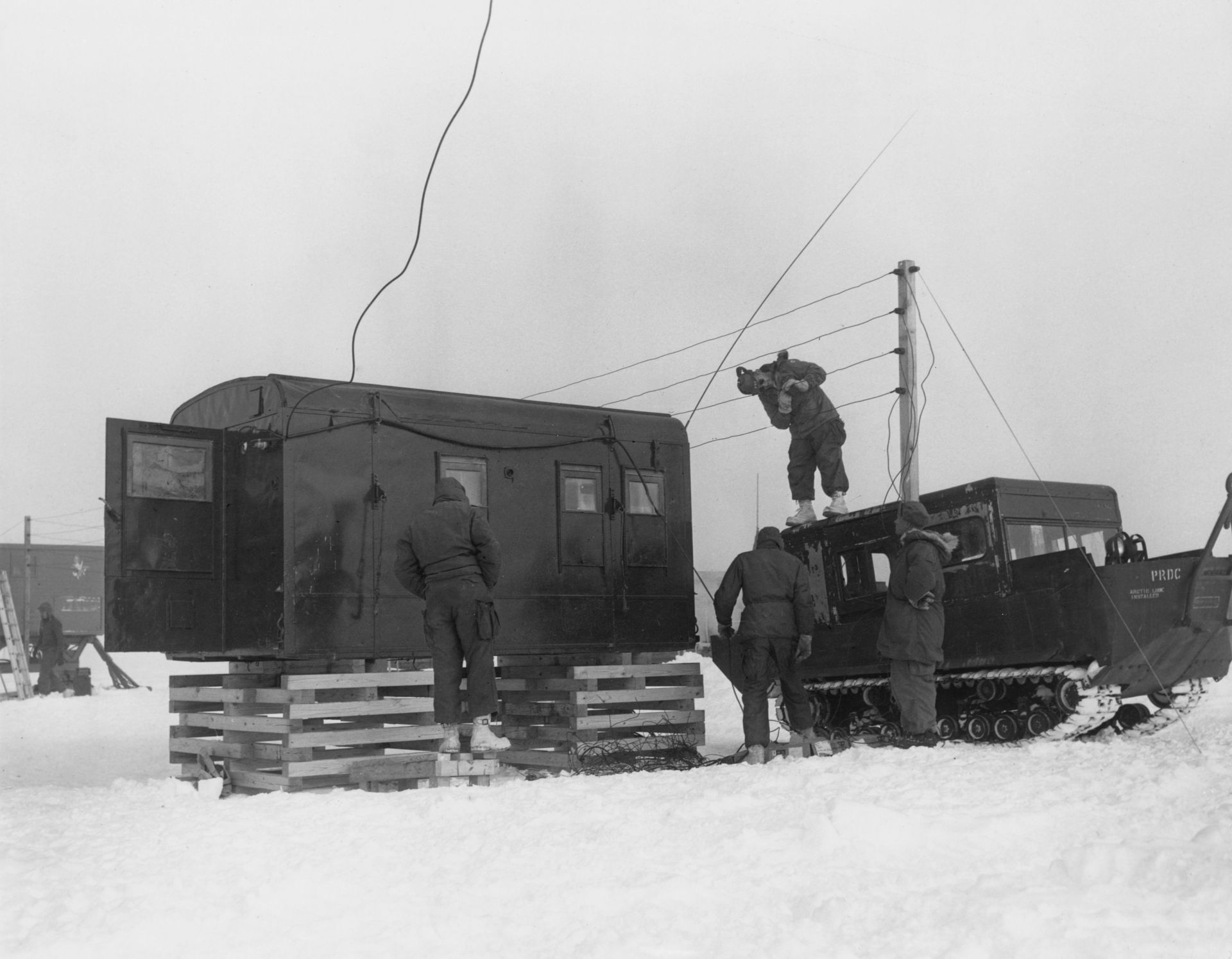Camp Century was a secret U.S. military base built inside the Greenland Ice Sheet in 1959 at the height of the Cold War. In official terms, the project was for Arctic research and the experimentation of construction techniques in extreme conditions.
But beneath its publicized purpose was a secret operation called Project Iceworm, which sought to bury nuclear missiles in a series of tunnels under the ice, which were meant to give a strategic advantage over the Soviet Union.
The U.S. Army Corps of Engineers constructed Camp Century some 125 miles inland from Greenland’s coast. The base, designed as a self-sustaining facility, was powered by a nuclear reactor and had living quarters, research labs, a clinic, a theater, and a library.
The project supposedly faced many hurdles including extreme weather and lack of transportation. Cooperative Institute for Research in Environmental Sciences (CIRES) stated that by 1963, military officials acknowledged the shortcomings of the project, and the reactor was decommissioned.
The facility could accommodate between 85 and 200 staff at any one time, it was termed a high-tech scientific facility, with researchers carrying out deep-ice core drilling that contributed to climate research.
But outside its scientific mission, Camp Century was also an experimental site for Project Iceworm, a secret plan to create a wide-ranging tunnel network beneath the ice that could hold some 600 nuclear missiles.
According to Independent, the missiles were meant to be aimed at the Soviet Union if necessary. Even though Greenland is a Danish territory, the project had gone under the radar of the Danish government.
Challenges and abandonment faced by the Camp Century in Greenland
Camp Century struggled with serious engineering and environmental problems. The shifting ice of the glacier made the construction unstable. This posed a significant danger to the personnel as well as the success of Project Iceworm due to structural instability.
In addition, operations in the Arctic were constantly threatened by extreme weather, with temperatures plummeting well below freezing and heavy snow making transportation and logistics difficult.
The base was abandoned entirely by 1967. Over the following decades, the snow and ice piled up over the facility making it difficult to discover.
NASA's recent radar scans have revealed the remnants of Camp Century buried beneath about 100 feet of ice. Environmentalists have expressed alarm about the long-term impact of the abandoned base on the environment.
Researchers suggest that the site hosts thousands of gallons of diesel fuel, sewage, other toxic pollutants like polychlorinated biphenyls, and low-level radioactive waste from its decommissioned reactor.
Climate change has become an added threat, the Arctic is now melting more rapidly. A study established that melting ice could unearth the base as soon as 2090.

